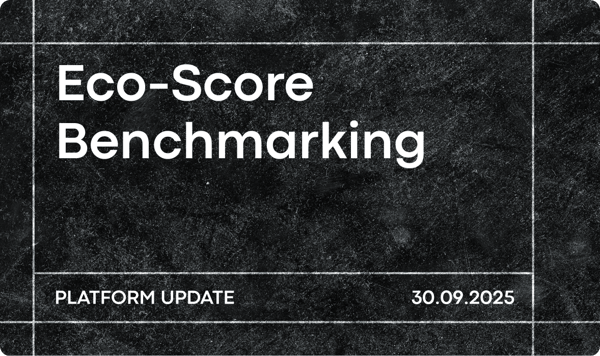Empowering Consumers for the Green Transition Directive
In 2024, the EU adopted the Empowering Consumers for the Green Transition directive, a landmark update to the Unfair Commercial Practices Directive (UCPD) that brings sharper rules against greenwashing and planned obsolescence. For fashion and textile brands, this marks a regulatory turning point. Vague, feel-good claims like “eco-friendly,” “climate neutral,” or “sustainable”,which were once widely used in product marketing, will no longer be permitted unless they are backed by independently verified data and reflect recognized excellent environmental performance. Similarly, using self-designed “eco-labels” or sustainability badges without a credible third-party certification scheme is now considered misleading and explicitly banned.
Another major change: brands can no longer make whole-product environmental claims if they only apply to a small component (e.g. “recycled jacket” when only the zipper is recycled), or base claims on carbon offsetting outside the supply chain. These updates close critical loopholes that allowed selective storytelling in sustainability marketing.
The directive enters into force across all Member States from September 27, 2026.
Previously, many of these practices fell into a legal grey zone – potentially misleading, but not formally blacklisted. With the revised UCPD, the rules are clear: if a claim isn’t verifiable, specific, and relevant to the entire product or process, it’s not compliant. For fashion brands, this means building claims on solid, product-level environmental data,and being able to show the evidence.
How Is the Fashion Industry Impacted by Environmental Claims and Labeling Schemes?
While the Unfair Commercial Practices Directive applies to a broad range of commercial practices, we’re going to focus on how it applies to environmental claims and labeling.
According to the UCPD, the term “environmental claims” refers to “the practice of suggesting or otherwise creating the impression (in a commercial communication, marketing or advertising) that a good or a service has a positive or no impact on the environment or is less damaging to the environment than competing goods or services.”
To comply with the UCPD, all environmental claims must adhere to the following requirements:
Claims Must Be Specific and Verifiable
Vague or generic terms such as “eco-friendly,” “green,” “sustainable,” or “climate neutral” are prohibited unless backed by recognized, verifiable certification.
Allowed: "Made with 95% GOTS-certified organic cotton"
Not allowed: "Sustainably made" (without substantiation)
Whole-Product Claims Must Match the Entire Product
It is prohibited to claim that a product as a whole is sustainable, recycled, or biodegradable if only one component meets the claim.
Allowed: “This T-shirt's stitching is made from recycled polyester.”
Not allowed: “Recycled T-shirt” (if only the label or thread is recycled)
Comparative Claims Require Full Transparency
Comparative statements like “30% lower CO₂ emissions than last year’s model” must specify:
- The methodology and scope (e.g. cradle-to-gate, cradle-to-grave)
- The reference product or competitor
- The units of comparison
Allowed: “This shoe generates 2.1 kg CO₂e, compared to 3.0 kg CO₂e for the 2022 version, based on cradle-to-gate LCA.”
Not allowed: “Our greenest shoe yet” (without explanation or benchmark)
Claims Must Cover the Entire Product Life Cycle
Any claim made by an apparel or footwear brand should take into consideration a product’s environmental impact across its entire lifecycle, including the supply chain.
Allowed: “Designed for disassembly: This sneaker features removable soles and mono-material uppers, making it easier to recycle after use.”
Not allowed: “Recycled sneaker” (when only the laces are made from recycled polyester and the rest of the shoe is glued together using multiple incompatible materials that cannot be separated or recycled)
Avoid Misleading by Omission
Highlighting one positive environmental feature while ignoring other significant negative impacts is considered misleading. This includes selective disclosure of benefits while hiding the broader footprint.
Allowed: “Contains recycled polyester; however, production still uses virgin fossil-based dyes.”
Not allowed: “Eco jacket” (if high-impact materials or processes are involved and not disclosed)
Product-Specific Claims Cannot Be Based on Corporate Averages
A sustainability claim for a single product must be based on that product’s actual attributes, not the brand’s general performance across its catalogue.
Allowed: “This dress contains 50% recycled wool.”
Not allowed: “All our products contain 50% recycled materials” (if the specific item in question does not)
Independent Verification Is Required for Fashion Sustainability Labels
Sustainability labels, logos, or visual badges must be based on independently verified schemes, publicly accessible, and not created by the brand itself.
Allowed: “Certified by OEKO-TEX® Standard 100”
Not allowed: Use of a self-designed “eco-logo” with no third-party validation
Durability and Repairability Information Must Be Disclosed
Fashion brands are now required to disclose whether commercial durability guarantees exceed the legal 2-year minimum, as well as whether and how the product can be repaired.
What Are the Penalties for Non-Compliance?
For serious violations (like misleading environmental claims or aggressive marketing), fashion brands can be fined up to 4% of their annual turnover. If a company’s turnover is not known, the fine must be at least €2 million.
Comparison UCPD and Empowering Consumers Directive
| UCPD |
Empowering Consumers Directive |
|
|
Application Date |
In force since 2007 across the EU |
New rules apply from September 27, 2026 |
|
Scope |
Prohibits unfair, misleading, and aggressive commercial practices in B2C transactions |
Expands scope to include sustainability-related practices like greenwashing, durability misrepresentation, and premature obsolescence |
|
Environmental Claims |
Misleading claims were prohibited, but generic terms (e.g., “eco-friendly”) were often tolerated if not blatantly false |
Generic environmental claims (such as "green," "sustainable," or "climate neutral") are prohibited unless supported by recognized certifications or verified evidence |
|
Sustainability Labels |
No explicit rules on self-created eco-labels |
Self-declared sustainability labels not based on public authority schemes or third-party certification are banned |
|
Offsetting-Based Claims |
Not explicitly regulated |
Carbon neutrality or reduced impact claims based solely on carbon offsetting are prohibited (e.g. “CO₂ neutral certified”) |
|
Whole-Product Misrepresentation |
Governed by general principles on misleading practices |
Now explicitly prohibited to apply a claim to the full product or company when it only applies to a part (e.g. “Recycled sneaker” when only the laces are recycled) |
|
Durability & Repairability |
Not addressed in UCPD |
Brands must disclose if a product contains features that limit durability, or if repair is not possible. Misleading consumers about these aspects is prohibited |
|
Use of Legal Requirements in Marketing |
Practices evaluated case-by-case |
Prohibited to market legal compliance (e.g. “free from banned chemicals”) as a unique feature if it applies to all market offerings |
|
Pre-contractual Transparency (B2C) |
Limited to general info on goods and services |
Adds requirements for pre-contract info on: durability guarantees (via harmonized label), software updates, repairability score, and spare parts availability |
|
Enforceability |
Misleading practices judged case-by-case under Articles 5–9 |
Expanded with new blacklisted practices — prohibited in all circumstances, making enforcement easier |
Prepare your Claims for Compliance
The Unfair Commercial Practices Directive requires brands to have deep insights into their products’ environmental footprint. That means: no compliant claim without structured, accurate data. For brands still relying on spreadsheets, supplier PDFs, or disconnected reporting tools, the risk of non-compliance is high.
That’s why apparel and textile companies must start building their data infrastructure now. Early preparation is essential to avoid last-minute scrambles, verification failures, or greenwashing penalties.
Carbonfact is your environmental data platform enabling rapid, scalable, and compliant product-level impact measurement
We help you with:
- Scientific, Product-Level Data: Carbonfact runs detailed product LCAs for your whole catalog, delivering cradle-to-grave environmental impact data ( water, waste, etc.) based on robust methodologies like PEFCR, ISO 14040, and the GHG Protocol.
- Full Transparency and Auditability: All data, sources, assumptions, and methods behind environmental claims are documented, retained, and accessible for inspection, critical for compliance. Audit trails make it easy to provide supporting evidence if regulators or consumers request it.
- Automated Data Management: Integration with ERPs, PLMs, and traceability solutions automates the collection and validation of primary data needed for substantiating claims and makes it possible to quickly respond to regulatory or consumer information requests.
- Clearly document scope, functional units, and trade-offs: The platform lets you define whether an impact applies to the entire product (e.g., “full shoe”), a single component (e.g., “midsole”), or a corporate activity (e.g., “factory operations”).








 Vincent Carrières
Vincent Carrières
![[Guide] Carbon accounting for fashion, textile, apparel, and footwear companies](https://www.carbonfact.com/hs-fs/hubfs/CA%20-%20Opt1.png?width=600&name=CA%20-%20Opt1.png)
 Angie Wu
Angie Wu

 Martin Daniel
Martin Daniel